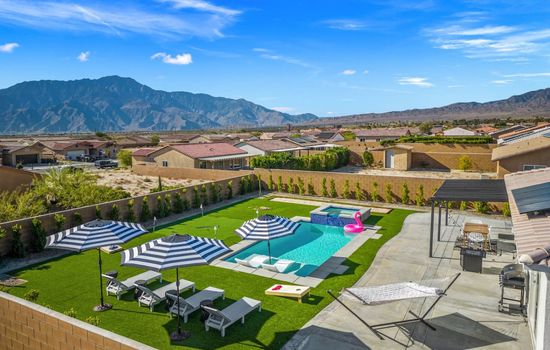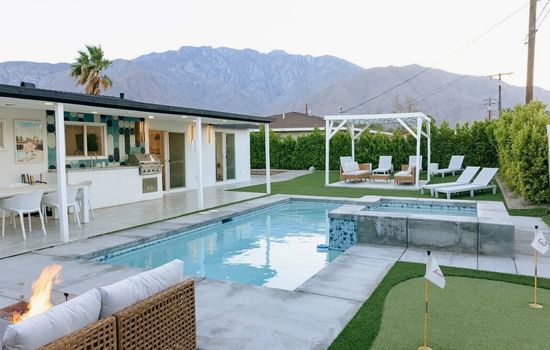The San Gabriel Mountains National Monument has several visitor centers, each with its own hours. The Chilao Visitor Center is open Saturdays and Sundays from 9 a.m. to 4 p.m. The Mount Baldy Visitor Center operates on Saturdays and Sundays from 8:30 a.m. to 3:30 p.m. The Clear Creek Information Center is open Saturdays and Sundays from 8 a.m. to 4 p.m. The San Gabriel Canyon Gateway Center is open Saturdays and Sundays from 8 a.m. to 3:30 p.m., and also Fridays from 9 a.m. to 3 p.m.
There is no entrance fee to visit the San Gabriel Mountains National Monument. However, some areas may require a Forest Adventure Pass, which costs $5 per day or $30 annually.
From Los Angeles, take I-210 East towards Azusa, then exit onto CA-39 North, winding through scenic landscapes to this natural gem.
Parking options at San Gabriel Mountains National Monument include developed trailhead parking with fees, and free alternate parking 0.5 miles away. No overnight parking in day-use areas. RVs and motorcycles can use designated lots, but check trailhead specifics for size restrictions. Adventure Pass required for developed areas, $5/day or $30 annually.
Accessibility & permits
Emergency
- Cell service availability:Partial
Information not accurate?
Help us improve by making a suggestion.
In the heart of Southern California, the San Gabriel Mountains National Monument stands as a sprawling tapestry of natural beauty and historical significance. This 346,177-acre preserve, designated by President Barack Obama in 2014, is a mere 90 minutes from the bustling Los Angeles Basin, yet it offers a world of solitude and adventure.
The monument is home to two scenic lakes, notably the alpine Crystal Lake, formed by one of the largest landslides on record. Here, surrounded by chaparrals, oak woodlands, and coastal sage scrub, visitors can immerse themselves in a rare Mediterranean ecosystem. The landscape is dotted with ancient limber pines, some over 1,000 years old, and is a crucial habitat for endangered species like the California condor, Nelson’s bighorn sheep, and the Southern California legless lizard.
Hikers can explore the Silver Moccasin Trail or venture into the Sheep Mountain Wilderness, San Gabriel Wilderness, and Pleasant View Ridge Wilderness. The Mount Wilson Observatory, where Edwin Powell Hubble made groundbreaking astronomical discoveries, is a must-visit for science enthusiasts.
During the summer, the monument comes alive with ranger-led nature walks and educational programs. Visitors can also enjoy fishing in the perennial streams, hang-gliding, or horseback riding through the deep canyons. For a touch of local culture, the nearby town of Sierra Madre offers artisan shops and dining experiences.
As the seasons change, the monument transforms; spring brings a vibrant display of wildflowers, including the Plummer’s mariposa lily and the San Gabriel Mountains sunflower. In the fall, the oak woodlands take on a golden hue, while winter offers a serene tranquility with snow-capped peaks.
For those seeking a more luxurious experience, the historic cabins and lodges within the monument provide cozy retreats. Local outfitters offer guided tours and equipment rentals, making it easy for visitors to explore this stunning region. Whether you are an avid hiker, a nature lover, or simply someone looking to escape the urban hustle, the San Gabriel Mountains National Monument is a place where the grandeur of nature and the richness of history converge in breathtaking harmony.
- Area (mi²)
- 706
- Annual visitors
- 4 600 000
- Established year
- 2014
Top 3 Facts about San Gabriel Mountains National Monument
The area features rocks up to 1.8 billion years old, making it a significant site for geological study, with visible bands, swirls, and twisting of ancient rocks near Mount Lowe and Mendenhall Peak.
This verdant haven boasts over 500 native plants and fungi, including isolated groves of bigcone Douglas-fir and gnarled limber pine. Home to the majestic California condor, Nelson’s bighorn sheep, and the Southern California legless lizard, it also shelters common wildlife like cougar, bobcat, and black bear. Rivers support native fish such as the Arroyo chub and mountain yellow-legged frog, while oak woodlands and streamside forests provide critical habitats for diverse species.
Towering peaks like Mount San Antonio and Mount Baden-Powell reach heights over 9,000 feet, casting shadows over deep canyons with perennial streams that cradle rare wildlife, including the California condor and spotted owl. The landscape is dotted with 1,000-year-old limber pines and unique rock formations, offering a backdrop for hiking, biking, and horseback riding amidst a vibrant ecological tapestry.
Family programs
- Junior Ranger
- Ranger-led Tours
- Workshops & Hands-on Activities
- Arts & Crafts
- Family Camping & Overnight
- Scavenger Hunts
- Night Sky & Astronomy
- Volunteer & Stewardship
- Youth Conservation
- Scouting Partnerships.
Travel Tips
Plan Ahead
Plan a few days for extensive trails and scenic drives. Check winter weather for high elevations. Pack extra food, clothing, and a compass. Visit the visitor center first. Rest often on rocky terrain. Limited dining options, so meal plan ahead. Enjoy during the wildflower season or full moon hikes.
Pack Appropriately
Pack layers for variable mountain weather, sturdy hiking boots, and a multi-tool. Bring a first-aid kit, plenty of water, and a portable charger. For overnight stays, include a lightweight tent, sleeping bag, and warm sleep layers. Check the season for specific gear needs.
Respect Wildlife
Observe wildlife from a safe distance, use binoculars or telephoto lenses, and stay on designated trails to minimize impact. Never feed or approach animals, and keep pets leashed. Respect seasonal regulations and leave the area as you found it.
Stay Informed
Exercise caution on trails, ledges, and near water. Check weather conditions, fire restrictions, and park rules. Carry a map, GPS, and extra supplies. For emergencies, call 911 or park authorities at 626-574-1613. Stay informed, stay safe.
Seasons
Spring in the San Gabriel Mountains brings mild temperatures (60s-70s°F) and vibrant wildflowers. Visit in March to April for optimal hiking and biking conditions. Don’t miss the reopening of Chantry Flat Recreation Area, a highlight of the season, with improved trails and facilities. Be prepared for potential snake and tick encounters.
Summer in the San Gabriels: warm days (80s-90s°F), mild nights. Hike, bike, or camp amidst lush scenery. Join outdoor movie nights and concerts at Huttopia Paradise Springs (June-August). Ideal for nature enthusiasts and stargazers.
Experience autumn’s vibrant hues and crisp temperatures (50s-70s°F) from October to November. Enjoy hiking, biking, and picnicking amidst golden leaves. Celebrate the 10th Anniversary in October with unique events and festivities. Ideal weather makes fall a perfect time to visit.
Experience the serene beauty of winter from December to February, with temperatures ranging from 43°F to 66°F. Mild days and cooler nights make for ideal hiking conditions, though occasional rainfall may limit some trails. A tranquil time to connect with nature.
Information not accurate?
Help us improve by making a suggestion.
Where to stay
Frequently Asked Questions
Ready to dive into what San Gabriel Mountains National Monument has to offer? Let’s tackle some of the burning questions you might have as you plan your visit!
-
The closest city to the San Gabriel Mountains National Monument is Los Angeles, which is located directly south of the monument. Other nearby cities include Glendora, where the monument’s headquarters is located, and various communities along the southern edge of the mountain range such as Pasadena and Azusa.
-
Dogs must be restrained or kept on a leash no longer than 6 feet at all times. They must also wear a collar with current tags and owners must pick up after them. Leashes are required in all areas where dogs are allowed.
-
Parking is available, but it has limitations. There are designated parking spaces, and undesignated areas are being blocked to manage parking. On major summer holiday weekends, parking capacity is often reached early in the day.
-
Hike to popular spots like Mount Baldy, Strawberry Peak, or the Bridge to Nowhere. Enjoy scenic drives on the Angeles Crest Scenic Byway and visit the Mount Wilson Observatory. Explore trails to Sturtevant Falls in the Chantry Flat area or relax at Crystal Lake.








